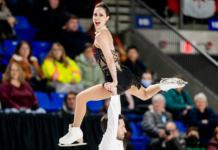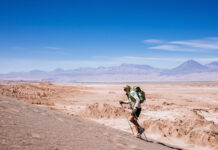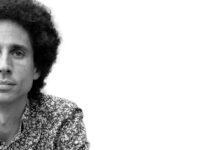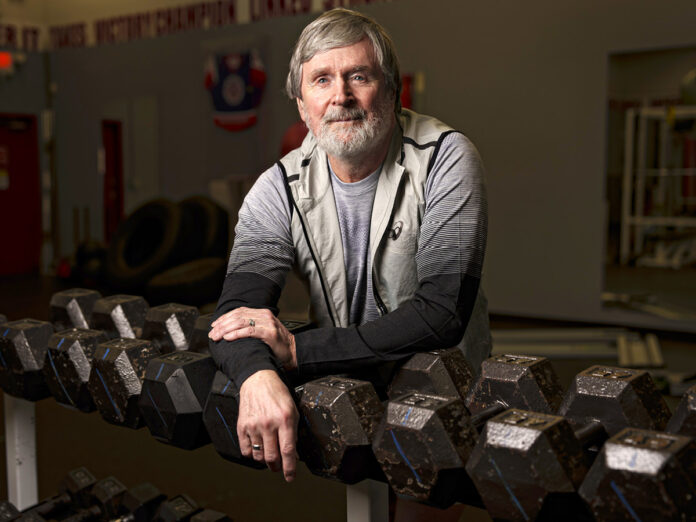
At 14, many boys are playing sports and adjusting to being teens. However, Peter Field was adjusting to life without his sight.
Field was diagnosed with glaucoma, an eye disease causing optic nerve damage that is rare among young people.
Being visually impaired left Field with little support or access to sports. He went from playing recreational soccer and cross-country running to avoiding athletics altogether.
“I don’t think they knew what to do with me,” said Field. “I would skip gym and nobody really cared.”
It wasn’t until Field was in his mid-20s that he returned to athletics with the blind community in Ottawa through a sport called Goalball, a Paralympic team sport specifically designed for visually impaired athletes.
He started in track and field, setting a 100-metre personal best of 14 seconds. Field then got into dragon boating, followed by his first triathlon in 2010. He enjoyed running, eventually increasing his distance to 10 kms and then half-marathons.
While running with a Paralympic friend, Field mentioned that he wanted to do a marathon, but he just didn’t think he’d be able to, having struggled with the half-marathon distance. His friend encouraged him. “Well, of course you can. Just get a training plan.”
Field found an app and began to train. And at 58-years-old, he ran his first marathon in Victoria, B.C. Just six weeks later he followed it up by running in the California International Marathon. In those six weeks, Field went from a time of 4:32 to 4:19.
Then… the pandemic hit.
The pandemic forced many people to get creative with their workout routines. A lot of people turned to running. However, that was no longer an option for Field.
The greatest obstacle that Field experiences when it comes to running is finding and keeping a running guide, especially in the small municipality of Hope, B.C. (he divides his time between Hope and Port Coquitlam).
With the pandemic came physical distancing regulations and Field was no longer able to do what he loved because his lifeline—his guide—wasn’t able to run shoulder-to-shoulder with him.
For a period of time, gyms were closed, meaning Field’s usual personal training sessions and treadmill runs were also not possible, leaving him with limited options.
I just find [running] incredible for my mental and physical health. I just feel better when I do it. I really look forward to my run.
“I just kind of took to walking, usually two-hour walks every day,” he says. “But every time a runner ran past me, I would grit my teeth. People took to running in the pandemic, well, the opposite happened to me, where for six weeks my running was totally curtailed.”
Following the COVID-19 pandemic, Field met Miles Bissky through the Hope Running Club. The two clicked as a pair.
If you were out for a jog or walk on the trails of Hope and Bissky and Field ran by you, you might not notice anything different. You’d see two obviously seasoned athletes out doing what they do, maybe chatting about life or the road in front of them, running shoulder-to-shoulder. You might also notice a short tether connecting the two.
“There are different techniques to tether,” says Field, explaining the simple yet effective way he has been able to run such races as the BMO Vancouver Marathon and his hardest challenge yet, the iconic Boston Marathon. “You can tether by the wrist, with a tether that’s about a foot long or so, or you can tether by the waist. I prefer a waist tether because that leaves your arms free.”
The act of “guiding” a visually impaired runner isn’t all that complicated, according to Field. At least it isn’t with him. There aren’t more than a few techniques and the rest is all verbal communication. He claims he could train a new guide from scratch in five minutes, so long as they’re willing.
“Peter is a strong runner; he’s dedicated,” says Bissky, pointing to the hours of treadmill miles Field logs by himself. “I’d describe him as a gritty runner.”
He’s also a grateful runner. The fact that all guides act as volunteers isn’t lost on him. Field is thankful for all the guides he’s run with over the years, including the Boston local who guided the first half of his Boston run, and the California-based guide who flew across the country to lead him through the second half. With her on the other end of the tether, Field crossed the finish line in 4:50.
So, what’s next for Field? He has signed up for a series out of Chilliwack, B.C. in which he will run three half-marathons. Although the race is not virtual, he has chosen to participate virtually on differing dates because the race director will be his running guide.
For now, find him in the gym focusing on strength and conditioning training with his personal trainer, or doing what he loves best – running the trails and roads in Hope, his guide by his side.
“I just find [running] incredible for my mental and physical health,” says Field. “I just feel better when I do it. I really look forward to my run.”
Photography by Christopher Morris
Apparel: ASICS/Runner’s Den
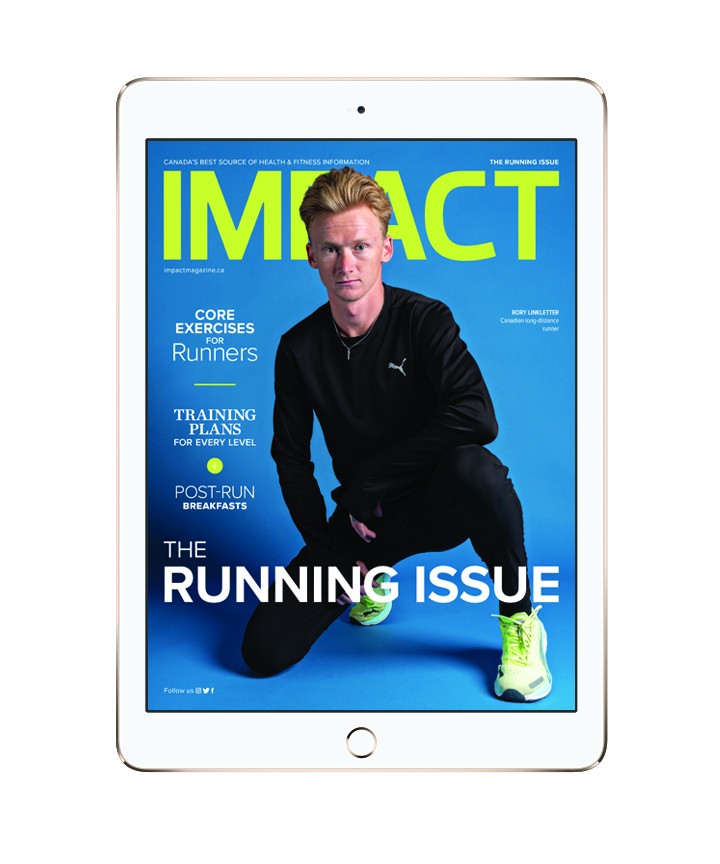
Read This Story in Our 2023 Running Issue
Featuring Rory Linkletter, Canadian long-distance runner. Add to your bucket list with the top Destination Marathons Around the World. Train for 10 km right up to a marathon – plus a 70.3 program. Increase your strength and work your core with Canada’s Top Fitness Trainers. Enjoy plant-based, post-run breakfasts and so much more.

